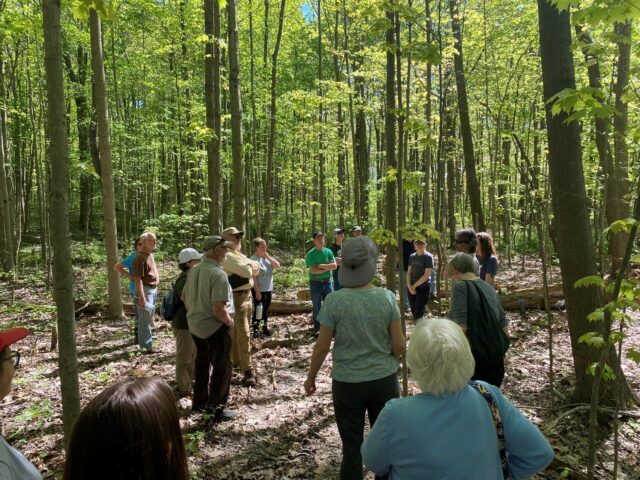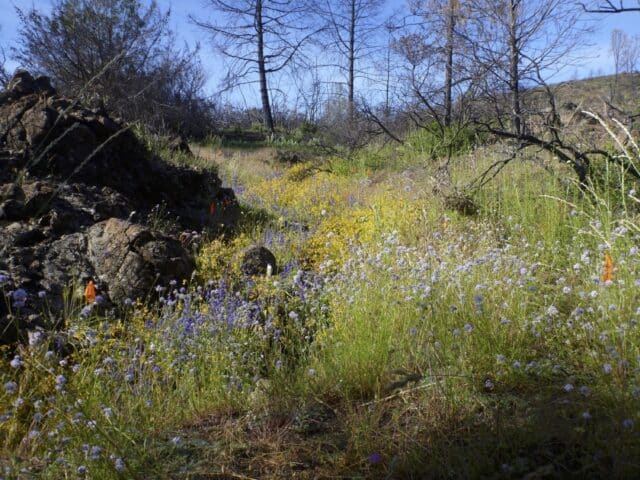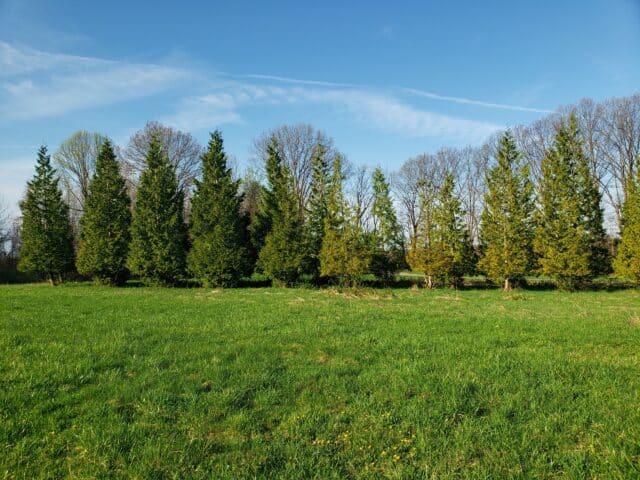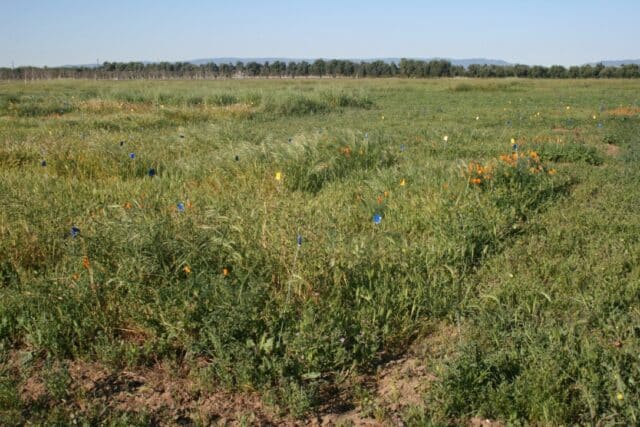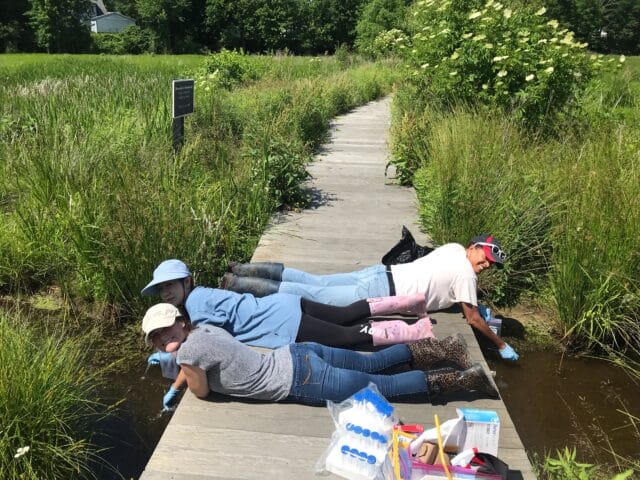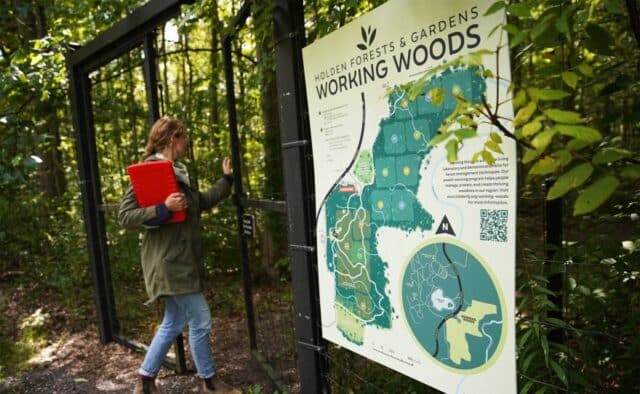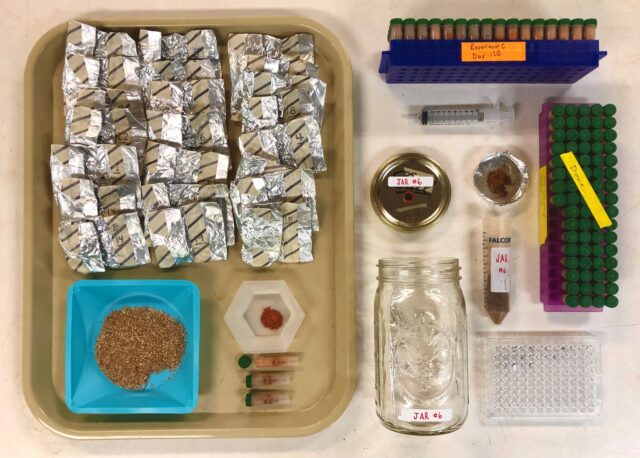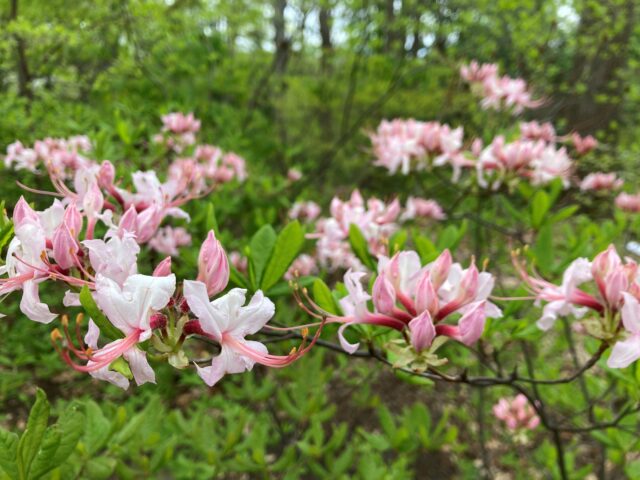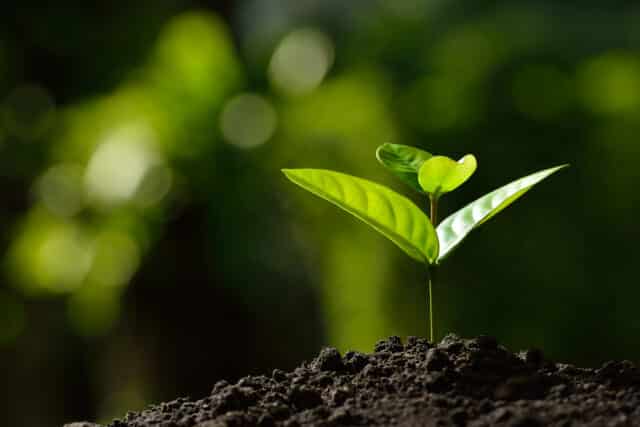Acid Rain’s Effects Still Visible Belowground in Eastern Forests
April 28, 2023

FOR IMMEDIATE RELEASE
New research from the Holden Arboretum finds de-acidifying forest soils helps bring back important plant-fungi relationships.
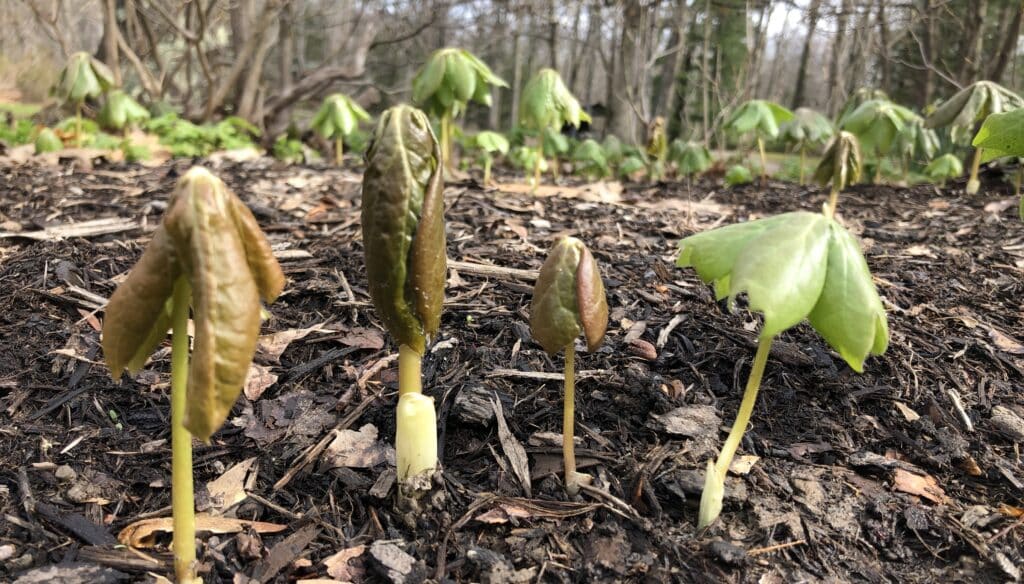
Caption: Mayapple (Podophyllum peltatum) is an important member of the forest understory ecosystem. In a new study, researchers at Holden Forests & Gardens found that plants in the eastern U.S. today are still feeling effects of acid rain from decades prior.
Whatever happened to acid rain? One might think this environmental hazard has gone the way of the hole in the ozone layer: Fixed, or at least, fixed enough that it’s no longer one of our more pressing environmental issues. Though the problem itself traces back to the Industrial Revolution, it didn’t enter the public eye until the 1970s. By then, it was clear that the sulfur dioxide and nitrous oxide that factories and cars burning fossil fuels were releasing were forming acids in the atmosphere and literally raining back down.
“I remember learning about acid rain in grade school and seeing pictures of old gravestones that had been chipped away by it,” says Sarah Carrino-Kyker, research associate at the Holden Arboretum. “The good news is, it’s quite a good environmental success story — we regulated sulfur dioxide emissions and nitrous oxide emissions from manufacturing and reduced our acidic deposition greatly.”
But even though the acid rain itself has calmed, the legacy of precipitation past still affects ecosystems today. In fact, over the last several decades, soils in eastern North America — where some of the worst acid rain occurred — have continued to become more and more acidic over time. The effect these acid soils have on native ecosystems isn’t well understood.
Carrino-Kyker, along with David Burke, Vice President of Science & Conservation at Holden Forests & Gardens, have been studying these legacy effects of acid rain on our native forests for over a decade. In their latest study, published in the Journal of the Torrey Botanical Society, they report that reversing soil acidification with limestone amendments can help bring back an important link in the forest ecosystem: the relationship between soil fungi called mycorrhizae and a common wildflower, mayapples (Podophyllum peltatum). These fungi are critical components of healthy soils, assisting plants in acquiring nutrients and resisting pathogens.
The team launched their study in 2009, working in three mature forests in northeastern Ohio where the soil pH averaged about 4.3 — more acidic than black coffee. They reversed the effects of acid rain in two ways, adding crushed limestone to de-acidify the soils and raise the pH, and adding phosphorus, an important plant nutrient that declines when soils are too acidic. They tested the two soil amendments both together and individually, raising the pH to 6 or higher, and increasing available phosphorus more than sevenfold.
They monitored the mayapples, and their mycorrhizal fungi companions, from 2011 to 2014. They found that de-acidifying the soils increased colonization of the plants by the fungi — a sign of improvement of the plant and soil communities. Changing the soil chemistry also changed the composition of elements found in the plants’ leaves, including how much carbon the plants contained.
Surprisingly, adding phosphorus had the opposite effect of de-acidification, instead reducing the amount of mycorrhizal fungi found in the plants’ roots. And none of the treatments had an effect on plant growth or reproduction, which the researchers suspect means that those metrics are light-limited. In other words, the plants likely didn’t have enough light to take advantage of the increased soil nutrients.
“These results stress the complexity of it, that all these organisms aren’t responding to one particular thing, they’re always responding to a suite of conditions,” Burke says.
—
Citation: Burke, D., C. R. Hewins, and S. R. Carrino-Kyker. 2022. Increases in soil pH and P availability in a temperate hardwood forest affect mycorrhizal colonization and nutrient content of the herbaceous wildflower Podophyllum peltatum (Mayapple). Torrey Botanical Society.
About Holden Forests & Gardens: Holden Forests & Gardens is made up of two of Northeast Ohio’s most important environmental and cultural institutions — the Holden Arboretum and Cleveland Botanical Garden — whose mission is to connect people with the wonder, beauty, and value of trees and plants, to inspire action for healthy communities. One of the largest public gardens in the country, Holden Forests & Gardens has 18,000 member households and an annual attendance of nearly 350,000 for whom we strive to provide inspirational and educational visitor experiences. Holden’s science, conservation and urban forestry work is widely acclaimed and helping to save native trees in Northeast Ohio and the Great Lakes region and beyond. For more information, visit holdenfg.org
Corresponding Author:
David Burke
[email protected]
Funders:
Holden Arboretum Trust
Corning Institute for Education and Research
